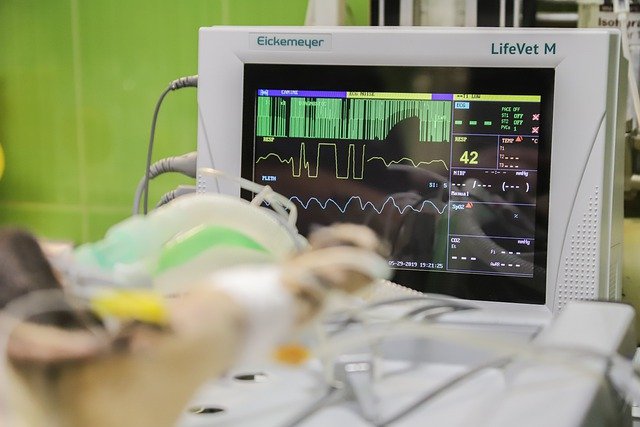Veterinary care has made incredible strides over the last decade. Modern animal care centers are pet-friendly mirrors of their human-centric counterparts. Veterinarians spend years of study to stand on the cutting edge of veterinary medicine; as of 2020, the American Veterinary Medical Association recognized 41 distinct specialties in the field, including oncology, dermatology, internal medicine, and dentistry, among others. These advancements have empowered veterinarians to make earlier and better-quality care interventions in a furry patient’s health. Today, even a canine heart problem or cancer diagnosis is cause for treatment, rather than anesthesia.
But these advancements and medical innovations come at a cost — one that, unfortunately, passes on to consumers. The cost of caring for an animal companion has skyrocketed in recent years; pet owners spent more than $14 billion on vet care in 2013, a significant uptick from the $8 billion they spent a little over a decade earlier. One 2011 report from the American Pet Product Association found that the costs of routine and surgical veterinary visits have risen 47% for dogs and 73% for cats over the preceding decade. Today, the average cost of an unexpected visit to the veterinarian can cost a pet owner anywhere between $800 to $1,500 a pop.
For some, the price is highly problematic. Faced with mounting vet bills, many pet owners make the unfortunate decision to limit or even forego needed care for their pet. According to a study published by the Access to Veterinary Care Coalition in 2018, 29.9% of surveyed households reported experiencing obstacles when accessing veterinary services. The foremost barrier was cost; a full 80% of participants said that high vet bills barred them from seeking preventative care, while 74% claimed the same for sick care and 56% for emergency care.
The challenge we face today is this — how can we insulate consumers from unexpected and high bills while still allowing access to veterinary advances and ensuring that patients receive the right care from the right providers?
The answer may be to weave two relatively untapped pet health solutions — pet insurance and telehealthcare — into one overarching approach.
Today, relatively few Americans have health insurance for their pets. In 2018, the American Pet Health Insurance Association reported that roughly 2.16 million pets, or 3% of the overall population, were insured in the US This number is a notable uptick (18%) from the year before, but still represents an underwhelming minority of pets. US rates of insurance enrollment are also low compared to those in countries where the idea of pet health insurance has been growing for years. In the UK, 20% of dogs and cats are insured; in Sweden, a full half of all pets are covered.
Pet insurance can help defray the costs associated with complex procedures and make caring for a pet more financially feasible. Moreover, monthly premiums are often easier to budget for than enormous out-of-pocket vet fees. Pet owners who enroll in an insurance plan can feel secure knowing that they have financial support when they seek care for their animal companions.
However, not all pet insurance offers are created equal. It’s not enough to offset costs and create payment plans; instead, insurers must offer a means to help enrollees avoid unnecessary or preventable care. Thus, we turn to telehealth.
Consider FIGO — an insurer that bakes telemedicine capabilities and health initiatives into its model. FIGO not only provides coverage for expensive, unanticipated vet bills but also offers an app with chat capabilities. Within a few quick taps, pet owners can chat with a real vet to gain a better understanding of what might be afflicting their pets. Veterinary consults are available at all hours, on all days, and for all policy members. This chat service can help owners understand what level of care is necessary and, in some cases, prevent enrollees from seeking unnecessary (and costly!) treatment.
For FIGO, supporting pet health means encouraging owners to be proactive in keeping their pets well. The FIGO app provides users with reminders for when an animal is due for routine care to ensure that they receive the preventative care they need to remain healthy. The app also connects users to other FIGO pet owners through the Pet Cloud and offers a map of local pet hotspots — all with the intent of encouraging people to connect, take their pets on walks, and promote healthy behaviors in daily life.
We need to stop looking at pet healthcare and telemedicine as an oddity and start viewing it as a necessity. Digitally-empowered plans like FIGO’s represent the upcoming maturity of the pet insurance space and illustrate how future offerings will come to mirror human insurance just as veterinary medicine has paralleled human healthcare. Insurers and veterinarians can encourage pet owners to view pet healthcare as a pursuit of wellness through regular healthy behaviors and use digitally-facilitated tools to connect pet owners with the resources they need to accomplish those wellness goals. Only then will we be able to address — even limit — the catastrophic effects of sky-high veterinary bills.






